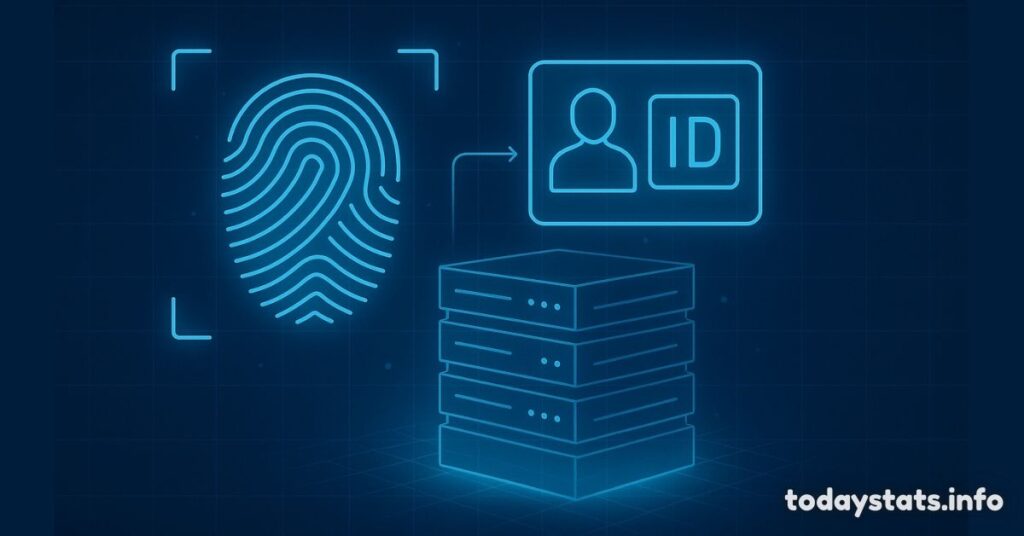In a world driven by data, unique digital identifiers like Huzoxhu4.f6q5-3d are quietly shaping how systems communicate, store, and secure information. Though the name might look like a random string of characters, it represents something far more important beneath the surface.
This identifier isn’t just a technical term it’s part of a larger digital framework that supports everything from identity verification to system integration.
Whether you’re a developer, data analyst, or just a curious reader, understanding what Huzoxhu4.f6q5-3d means can open your eyes to how the digital world stays organized, secure, and efficient.
In this guide, we’ll explore its purpose, how it fits into current technologies, and why it matters in an age of cybersecurity, automation, and data transformation.
Huzoxhu4.f6q5-3d

Huzoxhu4.f6q5-3d is a unique digital identifier used in modern systems to classify and manage data with high precision.
These identifiers are often used in complex software ecosystems where every component, object, or record must be uniquely distinguished.
Unlike random names, these identifiers are structured using consistent rules, making them ideal for data management, authentication, and system tracking.
Their importance has grown in today’s world where data classification and record identification play a huge role in digital workflows. From tracking user sessions to authenticating secure transactions, this naming convention holds powerful implications.
Potential Applications
The real-world uses of Huzoxhu4.f6q5-3d-like identifiers are vast. In database management, they ensure that each row or entry can be referenced without confusion. In cybersecurity tokens, these identifiers help generate encrypted, secure tokens for communication.
In digital identity platforms, this system supports identity verification and access control. File naming conventions in cloud storage use them to avoid duplication and ensure clarity across platforms.
Even in metadata management, they serve as stable references for attaching context to unstructured data.
Technical Frameworks and Standards

1. UUIDs and GUIDs
Universally Unique Identifiers (UUIDs) and Globally Unique Identifiers (GUIDs) are widely accepted standards. They use alphanumeric patterns to produce identifiers that are almost impossible to repeat.
Each part of the code often contains embedded data such as versioning, timestamps, or machine identifiers.
These identifiers are core to many platforms, including Windows, databases like PostgreSQL, and cloud solutions. They guarantee that every component across distributed systems maintains data integrity.
2. Encoding Systems
Encoding systems such as Base64 or Hexadecimal ensure identifiers remain compact and readable by machines. These systems support string parsing and data transformation across platforms.
Encoding also plays a crucial role in secure environments. Encoded tokens can be hidden or obfuscated during transmission, contributing to secure communication protocols. Additionally, string encoding helps with data retrieval systems, enabling faster indexing.
READ THIS BLOG: Master Huzoxhu4f6q5-3D for 3D Printing: Beginner’s Guide
The Importance of Unique Identifiers

1. Data Integrity
One of the most critical functions of unique identifiers is preserving data integrity. Each identifier acts like a digital fingerprint. In large datasets, these unique markers prevent duplication and misplacement.
Applications relying on accurate data like financial platforms or health systems use these identifiers to ensure every record is traceable and authentic. They also play a vital role in data protection frameworks.
2. Interoperability
In a world of multi-platform integration, system interoperability is essential. Unique identifiers act as bridges between software components. For example, APIs exchanging data use API keys as unique tokens to represent sessions or users.
These identifiers make it easier to link applications, services, and tools, without mixing up data sources. This is particularly important in systems where different architectures need to work together seamlessly.
3. Efficiency
When data is organized using consistent indexing methodology, systems work faster. Search functions, lookup tables, and sorting algorithms rely on identifiers to reduce overhead.
By assigning a string identifier to each entity, systems can quickly scan, match, and display information. This increases performance, especially in platforms with millions of users or items.
4. Scalability
As data grows, managing it becomes more complex. Systems designed with scalable database architecture use identifiers like Huzoxhu4.f6q5-3d to maintain order. These codes can scale along with storage, computation, and user traffic.
Such identifiers also support sharding, replication, and load balancing in cloud services. They help maintain data continuity across global servers.
READ THIS BLOG: What is Huzoxhu4.f6q5-3d? Features, Setup & Use Cases
Exploring the Implications What About Huzoxhu4.f6q5-3d

1. Privacy Concerns
Since these identifiers often contain timestamp or session-related metadata, privacy can be at risk. When combined with personal data, they could potentially be used to track users or behaviors.
Privacy compliance becomes essential. Regulations such as GDPR and HIPAA require masking or encrypting identifiers to ensure anonymity.
2. Regulatory Compliance
Organizations using unique key generation must meet strict standards for data classification and entity identification. Authorities may audit how these identifiers are generated, stored, and used.
Access control policies must be in place. Secure identity management frameworks ensure these identifiers don’t become backdoors to sensitive information.
3. Future Trends
The future of alphanumeric identifiers lies in greater automation. With advances in pattern recognition and machine learning, these identifiers could become more intelligent—adapting based on usage patterns or system load.
Digital transformation tools will likely automate the creation, validation, and expiration of identifiers. This could make workflows more seamless and less dependent on manual input.
4. Integration with AI and Machine Learning
AI-driven platforms benefit significantly from structured identifiers. Cognitive computing uses these codes to track and evaluate large datasets. In predictive analytics, these identifiers help in mapping and forecasting trends.
When paired with data labeling, unique IDs improve model accuracy by ensuring each data point is uniquely tagged. In entity recognition, systems can distinguish objects and users more precisely.
5. Enhanced User Experience
On the frontend, users benefit when systems are organized and fast. Unique identifiers reduce errors, speed up responses, and ensure consistent interactions.
Features like session identifiers help users resume tasks from where they left off. In e-commerce, for example, each cart or transaction is identified uniquely, reducing confusion and improving satisfaction.
Frequently Asked Questions
What is Huzoxhu4.f6q5-3d used for?
It is used to assign a unique digital identity to records, files, and system objects.
How do unique identifiers improve data security?
They prevent duplication, enable encryption, and restrict access to authorized users.
Are these identifiers machine-readable?
Yes, they are designed for fast parsing and recognition by software systems.
Can Huzoxhu4.f6q5-3d be used across platforms?
Absolutely. These identifiers are ideal for cross-platform integration and cloud services.
Do these identifiers affect system performance?
They improve performance by enabling faster indexing, sorting, and retrieval of data.
Conclusion
Huzoxhu4.f6q5-3d is more than just a string of characters. It is a powerful tool in digital identity, database management, and system interoperability. From enhancing data integrity to supporting scalable architectures, it plays a crucial role in how digital systems function.
As technology evolves, the use of structured, unique identifiers will only grow. They will become more embedded in AI systems, more regulated by compliance standards, and more valued by developers and users alike.
Understanding the significance and impact of identifiers like Huzoxhu4.f6q5-3d will help organizations design better systems, protect user data, and build future-ready platforms.

Smith is a seasoned SEO expert with a passion for content writing, keyword research, and web development. He combines technical expertise with creative strategies to deliver exceptional digital solutions.
















